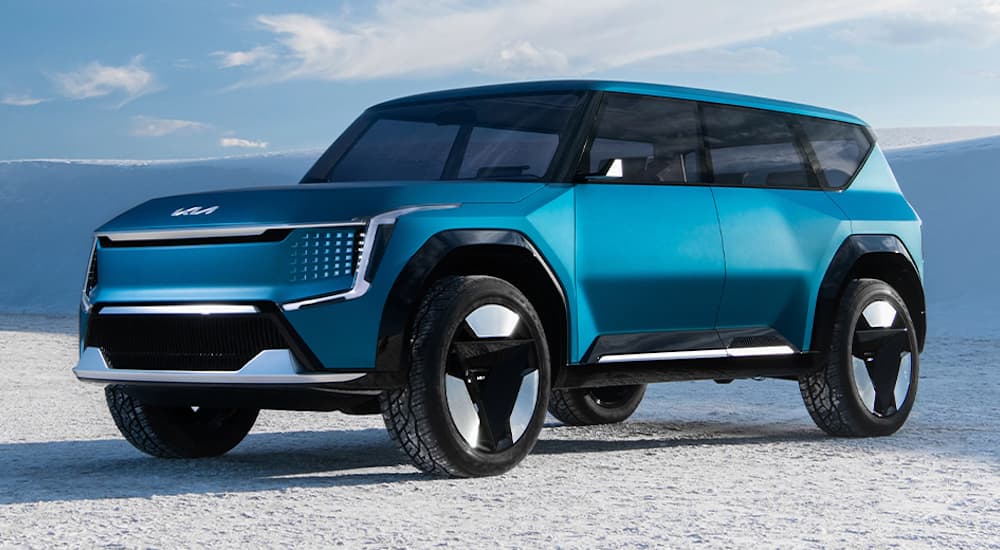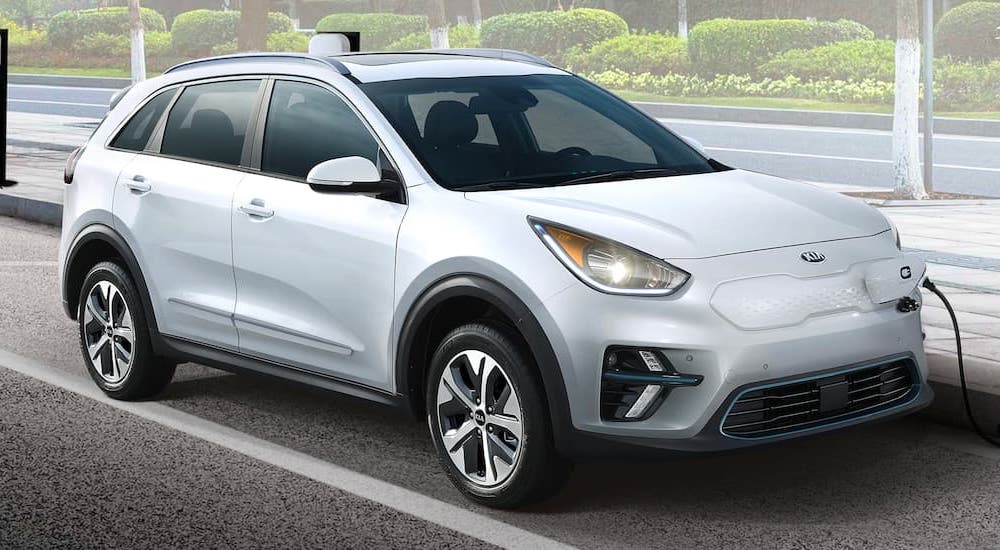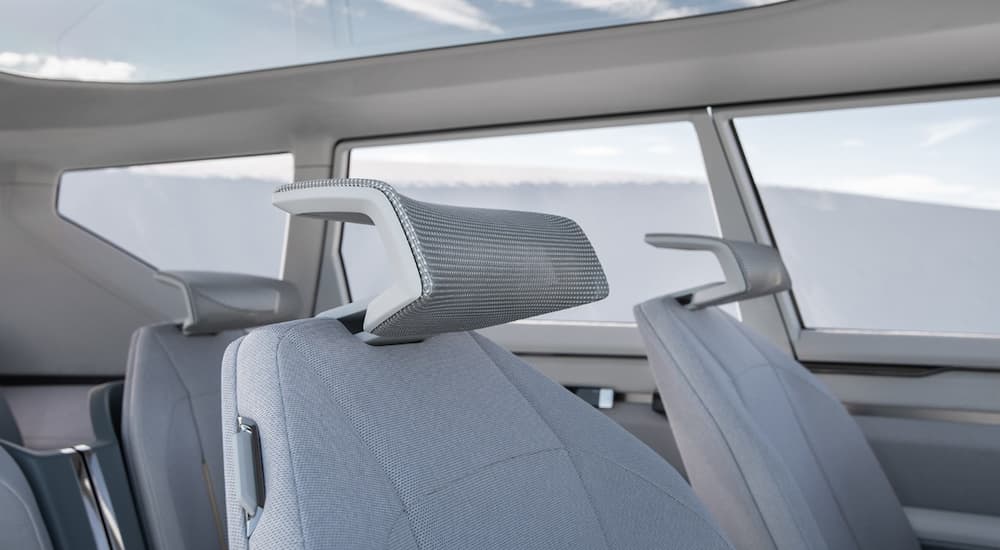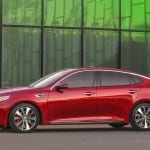The modern Kia lineup includes a wide range of vehicles that is growing with new additions, particularly Electric Vehicle (EV) models like the upcoming EV9 three-row SUV. One of the more-fascinating options that Kia is developing—though we won’t see it at a Kia dealer here in the US for a while—is a selection of Purpose-Built Vehicles (PBVs). These are models designed with a relatively narrow focus and with features that help them function for that particular purpose. Recently, Kia showed off its first PBV and what it will have to offer, including some pretty impressive features that showcase where Kia will be focusing in the years to come. For now, this will only be offered in Korea and select overseas markets, though the potential for a US release will be explored in the not-too-distant future.
What Is a PBV?
As the name would suggest, a Purpose-Built Vehicle is just that: a car, truck, SUV, or any other model that is built with a narrow purpose to its design. The cars and SUVs you’ll typically find at a dealership are built as consumer models; they are meant to meet a wide range of needs so that as many drivers as possible will be drawn to them. While they might focus on certain functions or features over others—like full-size trucks with high towing capacities or SUVs with impressive safety packages—they’re still designed for general use.
With a PBV, the manufacturer is designing and engineering it with a much-more limited or narrow purpose in mind. For example, cargo van models offered by many brands are essentially PBVs; they’re made for transporting cargo—usually for fulfilling “last-mile delivery” needs for various types of businesses. They can be further customized to meet the specific needs of a particular company or commercial client, but they’re ultimately designed with a pretty specific purpose in mind. Kia is looking to get into this lucrative market to offer some new options for businesses and private individuals looking for a PBV.
Kia Reveals the Niro Plus
Although Kia mentioned some time ago that they were taking aim at the PBV market, they recently revealed their first effort toward this end: the Niro Plus. Based heavily on the popular Niro, this is Kia’s first PBV—and it showcases the sort of approach we can expect them to take with future models. What’s really striking about the Niro Plus, from my perspective, is just how well Kia has recognized the need for customization—and the wide variety of options that a PBV, despite its narrow focus, still has to offer.
There are two different versions of the Niro Plus coming, each with its own focus; however, they’re still pretty similar. Between them, all three powertrain options currently available for the Niro will also be offered, so that customers can choose the right setup to suit what they’re looking for. All of this is in an effort to become a “Sustainable Mobility Solutions Provider” for businesses over the next decade—by delivering more options for PBVs in the years to come. The Niro Plus is Kia’s first step, but they’ve already outlined where they plan to go from here.
Two Niro Plus Options
Although both Niro Plus models are built on the same foundation, there are some pretty significant differences between them. The first model is simply called the “Niro Plus” and it’s being designed as a general PBV for a wide range of private owners. So far, Kia has mentioned that it would be well suited to use by small business owners looking to utilize the Niro Plus for work during the week, then leisure on the weekend. Similarly, it would be a good choice for car-hailing services by private owners. It will be available as a plug-in hybrid model, a standard hybrid electric vehicle, or as a full EV—as I said, they’re clearly committed to creating options for their customers.
The other offering is the Niro Plus Taxi Model, which is based on the first-generation Niro EV, a very popular model that first launched in 2018. Of the two Niro Plus models, this is the most significantly altered: the length has been increased by almost half an inch, but, more importantly, its height has been increased by more than three inches. This was done to create more room inside for occupants—something further boosted by the use of thinner seats and door panels to really maximize passenger room inside.
Even more impressively, Kia has revamped the interior in terms of technology: an integrated all-in-one display helps with driver convenience and makes it easier for the driver to keep their eyes on the road. This single screen will show navigation information, have the driver cluster, and even include an app taximeter to make tracking fares simple. The navigation system will even include data about points of interest to share with passengers and locations of nearby EV charging stations—to make this the perfect choice as an EV taxi.
Future PBV Options
This is only the start for Kia when it comes to its plans for finding its footing as a PBV leader—what they see as a real opportunity within an emerging and growing market. Their plan is to get these two Niro Plus vehicles onto the road in Korea this year, with additional availability in overseas markets quickly following that. In addition to this, Kia is also hard at work developing what they’ve called a “dedicated platform” for PBVs of different shapes and sizes, similar to the way that various manufacturers have been working on EV platforms that different models can then be developed on.
If all goes well, Kia plans to launch its first dedicated PBV in 2025—a model designed solely as a PBV, rather than being based on an existing one like the Niro Plus. From there, they want to be a market leader for PBVs by 2030—if all goes according to plan, this seems well within their reach. You can also look at things like the release of their updated Ray Van in Korea back in February, which is a single-seat van designed for cargo delivery, to see just how bold their plans are likely to be over the next decade. But what does this mean for us?
What This Means for the US
Unfortunately, at this time we don’t have any actual information about if or when we’ll see the Kia Niro Plus or any other PBV come to our shores. By no means has Kia said they’re not going to be designing PBVs for the US; instead, they’ve just kind of talked around the issue. In announcing and revealing the Niro Plus, Kia’s official statement was, “Kia aims to gradually expand its PBV business worldwide with the Niro Plus, and further launch markets and details will be announced soon.”
In other words, Kia knows there’s a growing need for PBVs of different types throughout the world—especially here in the US, where personal delivery services and ride-hailing have become incredibly popular over the last decade. With high demand for reliable vehicles, especially future-focused models with plug-in hybrid and EV drive systems, Kia is positioning itself to become a leader not only in South Korea but across the globe. I’m guessing they want to see exactly how things play out in their first markets before committing to anything, but there’s definitely room for them to find success here…if they develop the right features and models.






